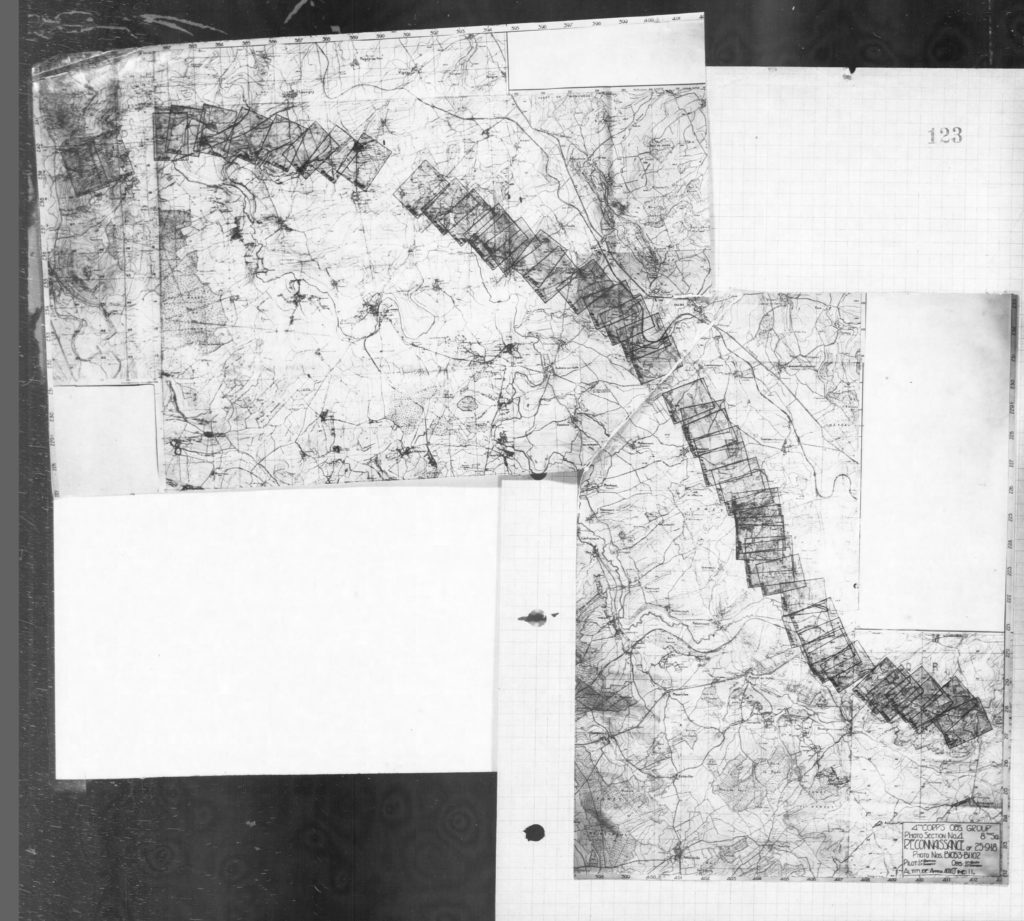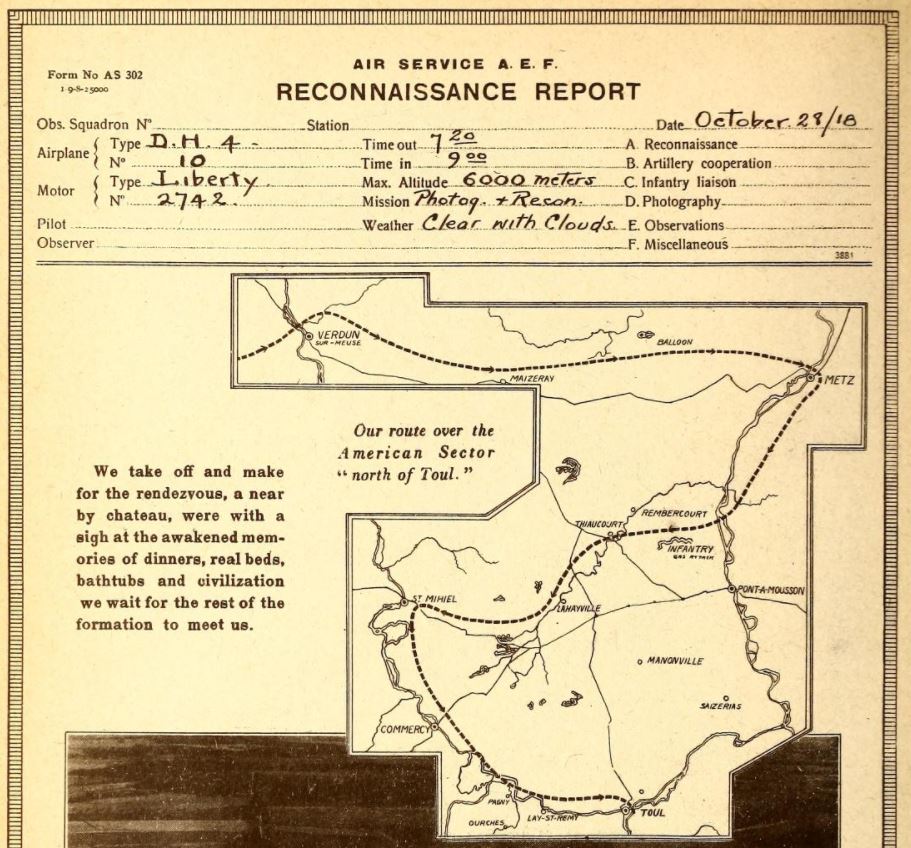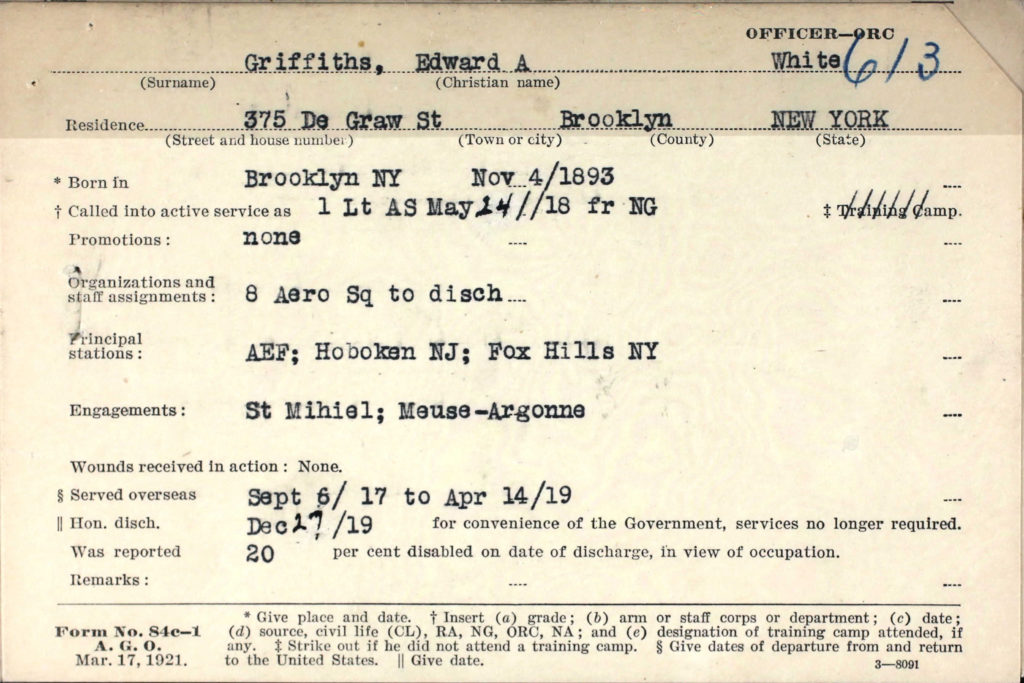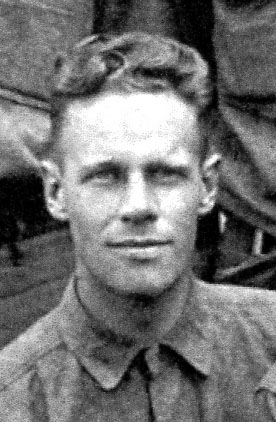(Brooklyn, New York, November 4, 1893 – Laconia, New Hampshire, January 23, 1972).1
Griffiths’s father, a coffee merchant, emigrated to New York from Australia around 1880; Griffiths’s mother was a New Yorker of Irish descent.2 Census records indicate that in 1910 Griffiths was working as a clerk in the insurance industry. By his own account, he was a member of the University of Virginia class of 1914; in 1915 he was working as a clerk for a broker.3 In 1916 he enlisted in the New York National Guard, and, as a member of Company E of the 1st New York Cavalry, served on the Mexican border during the Mexican Punitive Expedition.4 He was a candidate at the Plattsburg Reserve Officers’ Training Camp when he registered for the draft on June 4, 1917, and was among the twenty-five Plattsburg men (soon reduced to twenty) selected in July for aviation training at M.I.T.5 Less than a week later he was among those “elated over the prospect of their designation being changed to the Canadian branch of the Royal British Flying School at Toronto.”6 But this turned out either not to have panned out or to have been rumor, and Griffiths did, indeed, attend ground school at M.I.T., graduating August 25, 1918.7
Along with about one third of his ground school classmates, Griffiths chose or was chosen for flight training in Italy, and he joined the 150 men of the “Italian” or “second Oxford detachment” who sailed to England on the Carmania. They departed New York for Halifax on September 18, 1917, and departed Halifax as part of a convoy for the Atlantic crossing on September 21, 1917. When the Carmania docked at Liverpool on October 2, 1917, the detachment learned to their initial consternation that they were not to go to Italy, but to remain in England and attend ground school (again) at the Royal Flying Corps’s No. 2 School of Military Aeronautics at Oxford University.
On November 3, 1917, most of the detachment, including Griffiths, went from Oxford to Grantham in Lincolnshire to attend machine gun school at Harrowby Camp. At Grantham, Griffiths shared a “hut” with four men from his ground school class, Harvard DeHart Castle, Henry Bradley Frost, Lloyd Andrews Hamilton, and Melville Folsom Webber, as well as Parr Hooper, Thomas M. Nial, and Edward Russell Moore.8 There is a photo that Hooper took of Griffiths and Moore standing at the entrance to the hut, as well as a similar one of Griffiths and Albert Sidney Woolfolk taken by John Chadbourn Rorison.9 These, as well as one taken by Joseph Kirkbride Milnor, were presumably taken during the first part of the training at Grantham, because on November 19, 1917, fifty of the men, including Hooper, Rorison, and Milnor departed for flying schools.10 Griffiths was among the men who remained at Grantham until early December and completed both two-week machine gun courses, the first on the Vickers, the second on the Lewis machine gun. He was thus at Grantham for Thanksgiving festivities and the cadets’ football game between the “Unfits” and the “Hardly Ables.” Although he was on the latter, losing, team, he played a good game. Journalist turned aviator Walter Chalaire wrote that “‘Eddie’ Griffiths, a New York boy, University of Virginia ’14, as left guard of the Hardly Ables, played a ripping game. He was pitted against Lloyd Ludwig, of Brooklyn, Colgate ’16, and in the good-natured battle between the two some blood was spilled.”10a

On December 3, 1917, finally, the remaining men at Grantham were posted to squadrons for flying training, and Griffiths, along with Paul Vincent Carpenter, Castle, Charles Louis Heater, Richard Brumback Read, and Phillips Merrill Payson, went to No. 36 Squadron, a home defense squadron flying F.E.2d’s based in and around Newcastle.11
I find no R.A.F. service record for Griffiths and no information on his training postings after Newcastle. Griffiths is one of many men whose appointments as first lieutenants with “non-flying” status Pershing recommended in a cable dated April 8, 1918; for some reason it took Washington over a month to send the confirming cable, which is dated May 13, 1918.12 In July 1918 Griffiths, along with a number of other second Oxford detachment men, was in France, at the 3rd Aviation Instruction Center at Issoudun.12a
On August 18, 1918, Griffiths, along with fellow second Oxford detachment members Anker Christian Jensen, Edward Russell Moore, and John Howard Raftery, was assigned to and joined the U.S. 8th Aero Squadron at Amanty; they were soon followed by Hilary Baker Rex and Newton Philo Bevin.13 The 8th was an observation squadron flying (American) DH-4s; it had been at Amanty since the last day of July, attached to the I Corps Air Service of the American First (and at that time only) Army. The squadron was now doing intensive training, including making flights over the lines. On August 31, 1918, as part of the planning for the St. Mihiel Offensive, the 8th Aero was transferred to IV Corps and moved to Ourches-sur-Meuse, where the IV Corps Air Service was based. Griffiths was assigned as a pilot to A flight, with Gardner P. Allen as his observer; the flight leader was Moore.14 The squadron flew reconnaissance missions in preparation for and during the Battle of St. Mihiel in mid-September. On the 12th and 13th planes of the 8th Aero “were in the air for thirty-six hours and thirty minutes . . . and twenty-four separate missions were accomplished.”15
The IV Corps Air Service did not participate in the Meuse-Argonne Offensive, but remained initially at Ourches, performing photographic missions.16 On September 25, 1918, “At the suggestion of Colonel [Frank Purdy] Lahm two photographic planes were sent out on a single mission with protection instead of one machine. On such a trip made September 25th a string of pictures covering some forty kilometers were taken. This is one of the longest strips, if not the longest, photographed by an American Observation Squadron on a single mission.”16a The planes were piloted by Griffith and Claude Stokes Garrett; their photographer-observers were Allen and Robert James Cochran; a map with the locations of the individual photos in the strip marked was kept by the squadron.

At the end of September, IV Corps squadrons, including the 8th, moved a few miles east to Gengoult aerodrome near Toul. From there the 8th Aero flew extensive photographic missions as well as voluntary bombing missions.17 “One of the duties assigned at this time was to photograph the entire Corps front to a depth of ten kilometers, an area of about six hundred square kilometers.”18

On October 23, 1918, the 8th Aero moved once again, this time about ten miles northeast to Saizerais where, again, they undertook voluntary bombing missions.19 The 8th was now part of the Air Service of the recently formed Second Army, whose “task was to begin a general offensive leading to the capture of Metz and the gateway into Germany proper.”20 The armistice supervened.

Eight days later (November 19, 1918) Griffiths was admitted to Base Hospital No. 55 at Toul, suffering from influenza. He was dropped from the rolls of the 8th Aero on November 20, 1918, and transferred, apparently on November 25, 1918, to the Second Aviation Instruction Center at Tours, presumably to await orders home.21 Four months later, on March 31, 1919, he sailed on the S.S. Pannonia from Brest and arrived at Hoboken on April 12, 1919.22 Griffiths’s military service abstract card indicates that he was discharged at the end of the year; it also records, with no further detail, that he was twenty percent disabled.23
After the war Griffiths returned initially to New York and worked for companies that supplied hotel equipment; in the forties he moved to Massachusetts and became the president of Jones, McDuffee, & Stratton, a maker of china.24
mrsmcq August 25, 2017; updated August 6, 2020 to reflect Sept. 25, 1918, photographic mission
Notes
(For complete bibliographic entries, please consult the list of works and web pages cited.)
1 Griffiths’s place and date of birth are taken from Ancestry.com, U.S., World War I Draft Registration Cards, 1917–1918, record for Edward A Griffiths. His date and probable place of death are taken from Ancestry.com, U.S., Social Security Death Index, 1935–Current, record for Edward Griffiths; this does not provide a place of death, but only a “last residence.” The photo is a detail from a group photo of Griffiths’s M.I.T. ground school class.
2 Information on Griffiths’s descent is based on records available at Ancestry.com.
3 Ancestry.com, 1910 United States Federal Census, record for Edward A Griffiths; Ancestry.com, New York, State Census, 1915, record for Edward Griffiths. Griffiths wrote “E A Griffiths. U of Va ’14, Brooklyn NY” on the back of a photo of his M.I.T. ground school class kept by Joseph Raymond Payden. I have not thus far been able to locate an official record of his college attendance.
4 Ancestry.com, New York, Mexican Punitive Campaign Muster Rolls for National Guard, 1916–1917, record for Edward A Griffiths; “Cavalry Veterans Hold 1st Reunion Since Border Days.”
5 “Twelve N. Y. Plattsburgers Ordered to Flying School” and “Aviation School List Cut.”
6 “Brooklyn Aviators May Go to Canada.”
7 “Ground School Graduations [for August 25, 1917].”
8 See Hooper, Somewhere in France, letter of November 4, 1917.
9 Hooper, Somewhere in France, photos following Chapter 3; Doyle, “War Birds Pictorial,” p. 35.
10 Foss, diary entry for November 15, 1917.
10a Chalaire, “Thanksgiving Day with the Aviators Abroad.”
11 “Cadets of Italian Detachment Posted Dec 3rd” in Foss, Papers. On 36, see See Philpott, Birth of the Royal Air Force, p. 402, and Wikipedia, “RAF Usworth.”
12a Dwyer, “Memorandum No. 8 for Flying Officers,” p. 4.
13 “8th Aero Squadron,” pp. 140-41.
14 Ibid ., p. 134.
15 8th Aero Squadron,” p. 116; this is part of the “Report on Operations against the St. Mihiel Salient” submitted by squadron C.O. John Gilbert Winant, which is also reproduced on pp. 689-91 of Maurer, The U.S. Air Service in World War I, vol. 3. Unfortunately operations reports that might provide details of individual flights appear not to have been preserved; they are not, for example, in Gorrell C.14.
16 Maurer, The U.S. Air Service in World War I, vol. 1, p. 245. Griffiths’s New York military service card, which indicates he served in both St. Mihiel and Meuse-Argonne, is thus technically in error, but appropriately credits his service during the latter time period. See Ancestry.com, New York, Abstracts of World War I Military Service, 1917–1919, record for Edward A Griffiths.
16a “8th Aero Squadron,” p. 111.
17 Ibid., pp. 111 and 112.
18 Ibid ., p. 111.
19 Ibid ., pp. 112 and 144.
20 Sloan, Wings of Honor, p. 360.
21 “8th Aero Squadron,” p. 145.
22 War Department, Office of the Quartermaster General, Army Transport Service. Lists of Incoming Passengers, 1917 – 1938, Passenger list of casuals for orders, on S.S. Pannonia.
23 Ancestry.com, New York, Abstracts of World War I Military Service, 1917–1919, record for Edward A Griffiths.
24 See Ancestry.com, 1930 United States Federal Census & 1940 United States Federal Census, records for Edward A Griffiths and Eder [sic] A. Griffiths, respectively; and R. L. Polk & Co., Polk’s Newton (Middlesex County, Mass.) City Directory 1948.

